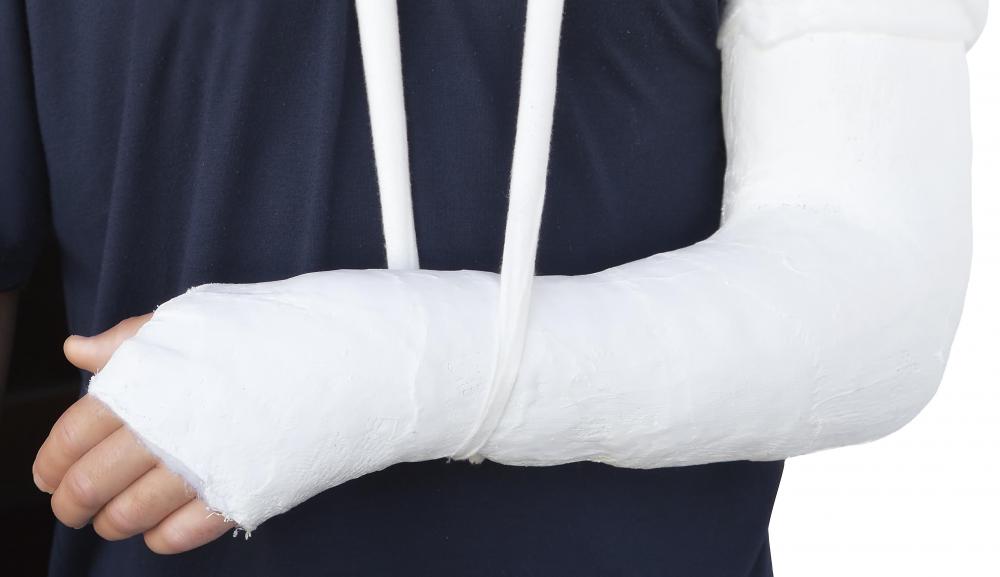At WiseGEEK, we're committed to delivering accurate, trustworthy information. Our expert-authored content is rigorously fact-checked and sourced from credible authorities. Discover how we uphold the highest standards in providing you with reliable knowledge.
What are the Different Treatments for Forearm Fractures?
A forearm fracture can be a painful condition, which typically requires immediate treatment. Though this condition can, at times, be quite severe, treatments are very successful. One of the most common types of treatment for forearm fractures is casting, which typically is done in the less severe fractures. Those who have suffered a more complicated fracture may require surgery. At this stage, classification is again made between severity levels, with the more minor cases receiving only screw implantation, while the most severe fractures typically require a metal plate. In some cases, prescription medications may also be given to individuals who suffer from forearm fractures.
One of the most common forms of treatment for forearm fractures is casting. In most cases, casting is done when the fracture is relatively minor, when the individual affected with the forearm fracture is very young or very old, or if another condition is occurring that suggests the patient may not be a good candidate for surgery. Typically, individuals who are given casts in an attempt to heal forearm fractures are required to wear them for at least one month in order to ensure optimal healing, although in some cases, a longer period of time may be needed. Plaster casts are ideal for those suffering from a forearm fracture, though canvas or cloth casts are other options.

In more serious forearm fractures, surgery may be required to completely treat the injury. Typically, the severity of the injury dictates the type of surgery that will be performed. Fractures that are severe enough to require surgery but are still relatively minor rely on screws to hold the fractured bones in place. In contrast, the most severe fractures often require a metal plate with additional screws in order to hold all of the fractured bones together. Though invasive, these surgeries are usually considered to be relatively simple procedures, and in some cases can even be performed on an outpatient basis. Those who have undergone surgery to treat forearm fractures often are still required to wear a splint for an extended period of time in order to ensure complete recovery of the affected area.

In some cases, prescription medications may be provided to those who have suffered from forearm fractures. Typically, these pain-killers are given for only a short period of time, in order to prevent dependency. They are usually only required in the most severe types of forearm fractures.
AS FEATURED ON:
AS FEATURED ON:













Discuss this Article
Post your comments